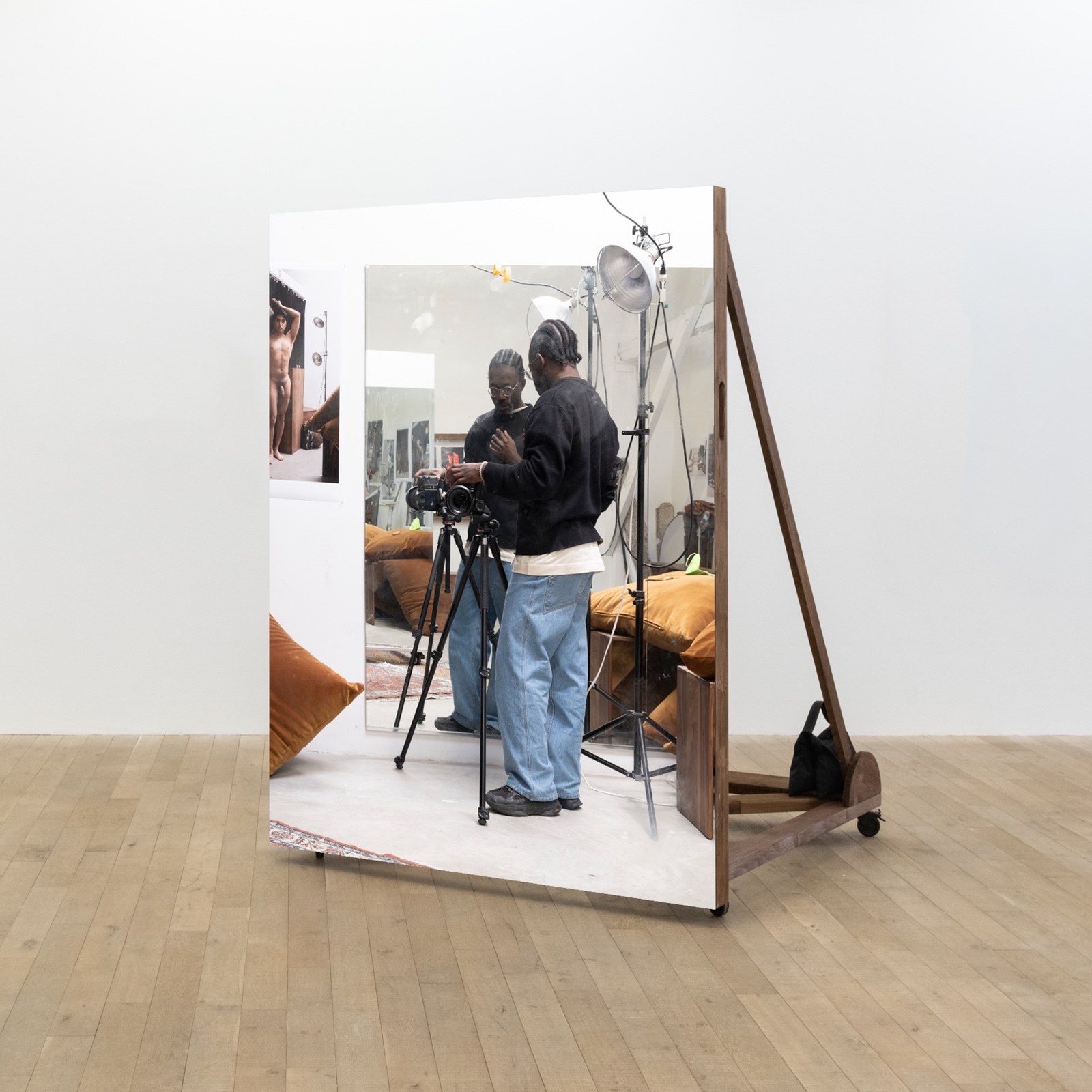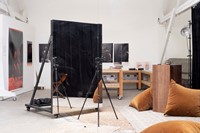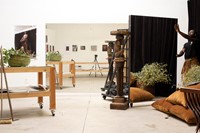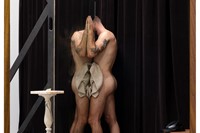“I will be surprised when I get into the gallery,” explains American artist, Paul Mpagi Sepuya, on the eve of Exposure, his first UK institutional exhibition that opens today at Nottingham Contemporary. “I wanted to be hands-off in the formulation of this exhibition, trusting that the work has enough in it, and that Nicole Yip’s (chief curator) research and care would bring things together.”
This collaborative approach to image and exhibition-making has been central to Sepuya’s practice since graduating from New York University’s Tisch School of the Arts in 2004. Now highly sought after, Sepuya’s early series of zines featuring portraits of friends, Shoot, is cited as an important part of the resurgence of queer self-publishing culture in the 2000s. Major institutional recognition came in 2018 when he was selected for New Photography 2018, MoMa’s survey of essential artists working at the forefront of photography, followed by his participation in the Whitney Biennial in 2019.
Sepuya’s distinctive approach to image-making employs the fundamental elements of photographic portraiture; the camera, the tripod, the studio, the sitter, to make photographs that “are not only images of desire, but also images about the making of images”.
Below, AnOther spoke to Paul Mpagi Sepuya about his relationship with the studio, and the influence of UCLA Professor Mary Kelly, specifically her view that “everything outside of and up to the frame has as much meaning as what’s inside of it”.
Adam Murray: Your exhibition at Nottingham Contemporary is the first institutional presentation of your work in the UK. Can you give us some insight into the process of working with chief curator, Nicole Yip?
Paul Mpagi Sepuya: Nicole has brought her own curatorial perspective to this most recent project of mine, Daylight Studio / Dark Room Studio, gathering a survey of works from the past few years along with selected earlier works that illuminate aspects of my work in a new way. When I’m putting together a gallery exhibition I am starting from scratch so to speak, in a way I’m sorting out and clarifying whatever work I’ve been making. Something I really love with institutional projects is trusting the curator to discover something new. I mentioned that I would like Nicole to take the lead, and she came up with this wonderful idea of dual meanings of ‘exposure’ to re-frame this work and contextualise it.
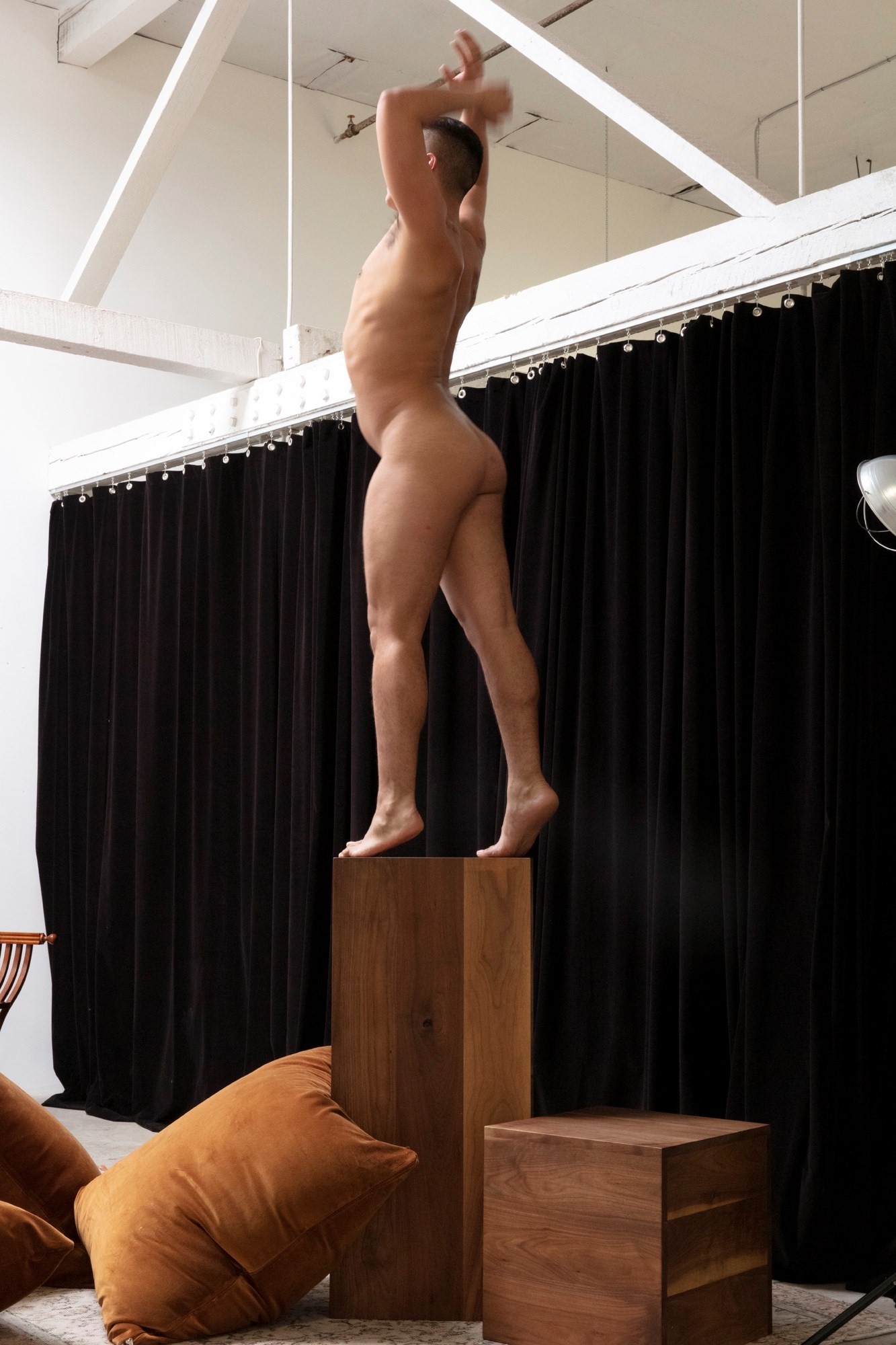
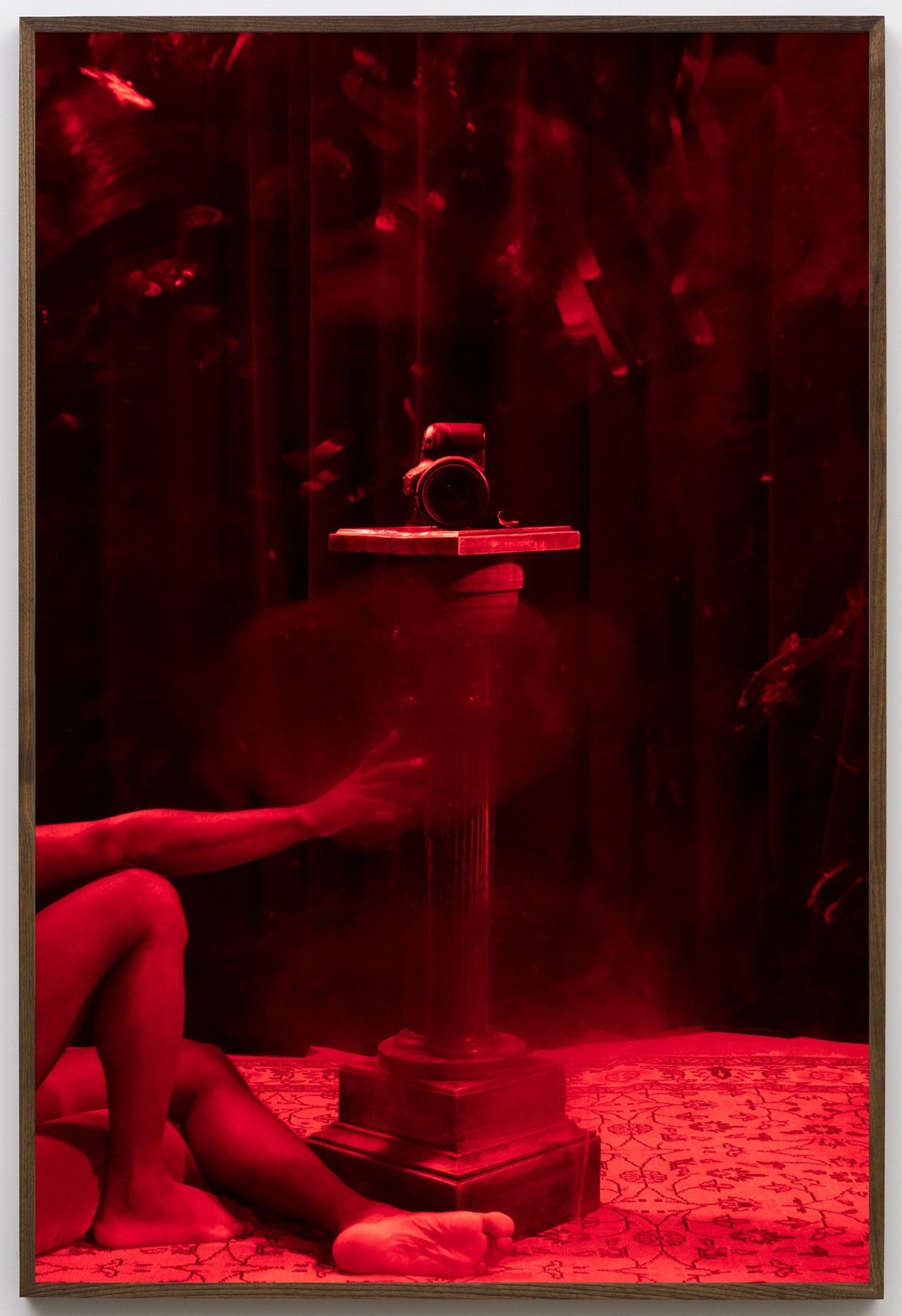
AM: During a visiting lecture you gave at the University of Arkansas in 2021, you referenced Mary Kelly, a professor in the art department at UCLA where you completed your MFA, specifically her view that ‘everything outside of and up to the frame has as much meaning as what’s inside of it’. How has this informed your exhibition design with this new show?
PMS: No one’s asked me about that before. There are two ways I could approach that. One is everything outside of and up to the moment the picture is made, the social and creative context outside of but supporting the frame of the work. And the other is of course in exhibition layout, the scale and feeling of approach to the work. How is the audience directed? What supports the work? There are many others who were official mentees of Mary, who could better explain her method. But I really enjoyed incorporating that into my thinking. And yet, I wanted to be hands-off in the formulation of this exhibition, trusting that the work has enough in it, and that Nicole’s research and care would bring things together. I will be surprised when I get into the gallery, and we’ll work to finalise the layout in ways that of course consider everything in Mary’s method.
AM: What is your emotional connection to the studio? Why is this space the stage for your work?
PMS: I don’t know if I have an emotional connection to the studio. Perhaps a comfort, a fixation? I don’t want my home on display in pictures. You have to know me to be there. And in some ways, I’m also protective of the studio. But I love photographing it. It’s a space that’s always ever-so-slightly changing and is always there for casual observation or a large intervention or a game to be played.
“In some ways, I’m also protective of the studio. But I love photographing it. It’s a space that’s always ever-so-slightly changing” – Paul Mpagi Sepuya
AM: I am interested in your use of language. You employ objective or technical photography language for your titles, for example, previous exhibitions include Dark Room (2018), Push/Pull (2023) and this show, Exposure. I assume there is much more to it than simple image descriptions, could you explain the role language plays in your work?
PMS: I wanted to shift to more objective and technical language in titling the work, starting in 2014, as a way to move away from giving away names, and pushing two things to happen simultaneously – first a formal description of the picture that does not evaluate the content, and then a reliance on recognition and familiarity from a select intended audience, or the feeling of not-knowing but wanting-to-know who the subjects might be by strangers. So the pictures could move into a somewhat cold medium-specific conversation, but the intimacy is completed by proximity or knowledge of intimate spaces outside of medium and into the realm of gossip, flirtation, and drives. I’m working on a whole new body of work and thinking for the first time what might be possible leaning into descriptions of the gestures, with pictures that continue to push my own boundaries of explicitness.
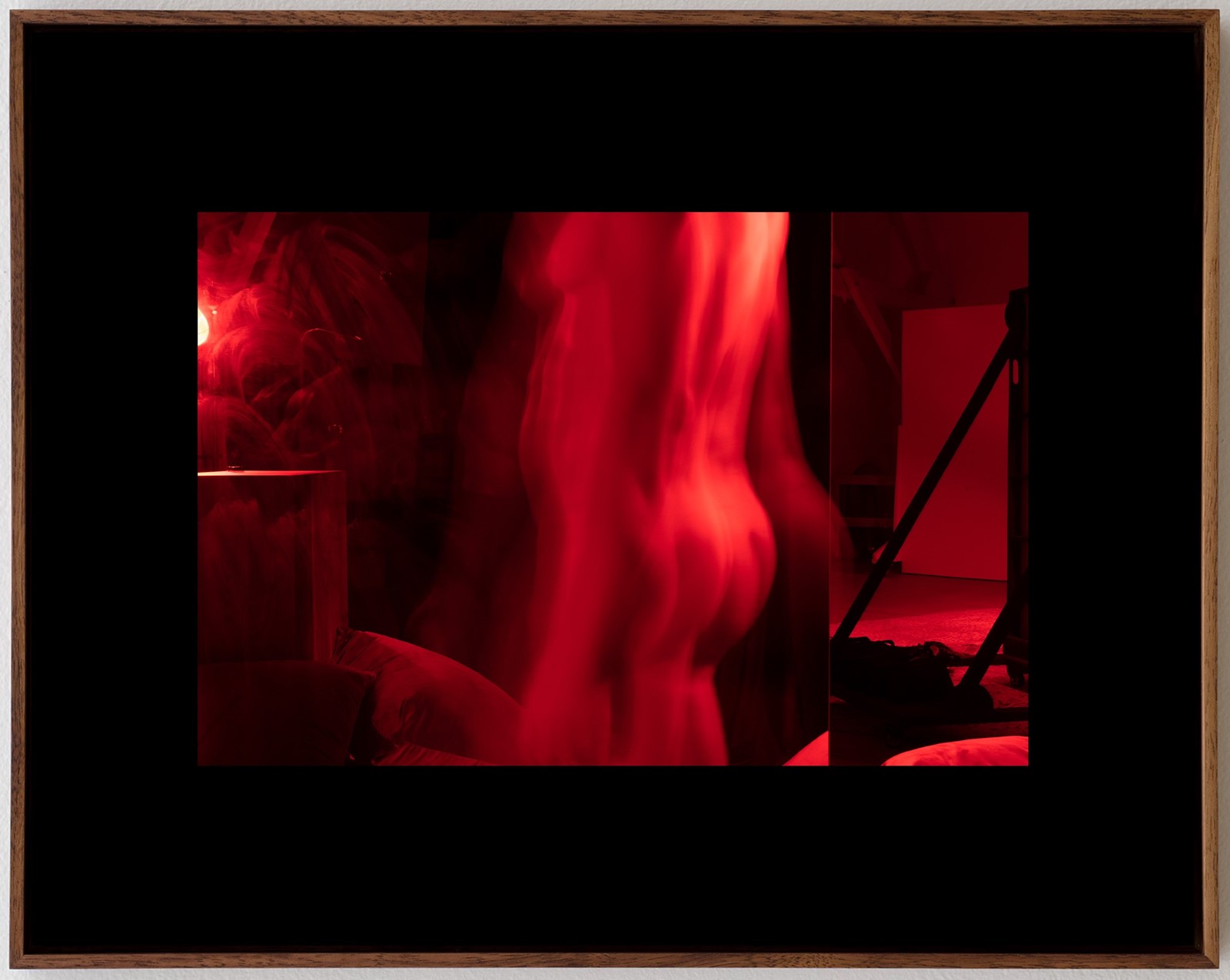
AM: When we met last year, I told you that the first time I saw your work in an exhibition was at the 2019 Whitney Biennial, but you were quick to explain that you credit those works to the individuals that you invited to shoot alongside you. Generosity, creative exchange, and togetherness is an inherent part of your practice. How does this manifest in this exhibition?
PMS: The Whitney Biennial was a presentation that brought together photographs made and authored by friends who photographed alongside me in my studio while I was making work of my own. A few pictures were collaborative in the sense of being co-authored. All were attributed. In this show, it manifests in thanking those friends who are in the work being shown. There’s an interdependent relationship there. These are all my photographs but their kindness and generosity make it possible.
Exposure by Paul Mpagi Sepuya is on show at Nottingham Contemporary from 27 January – 5 May 2024.
